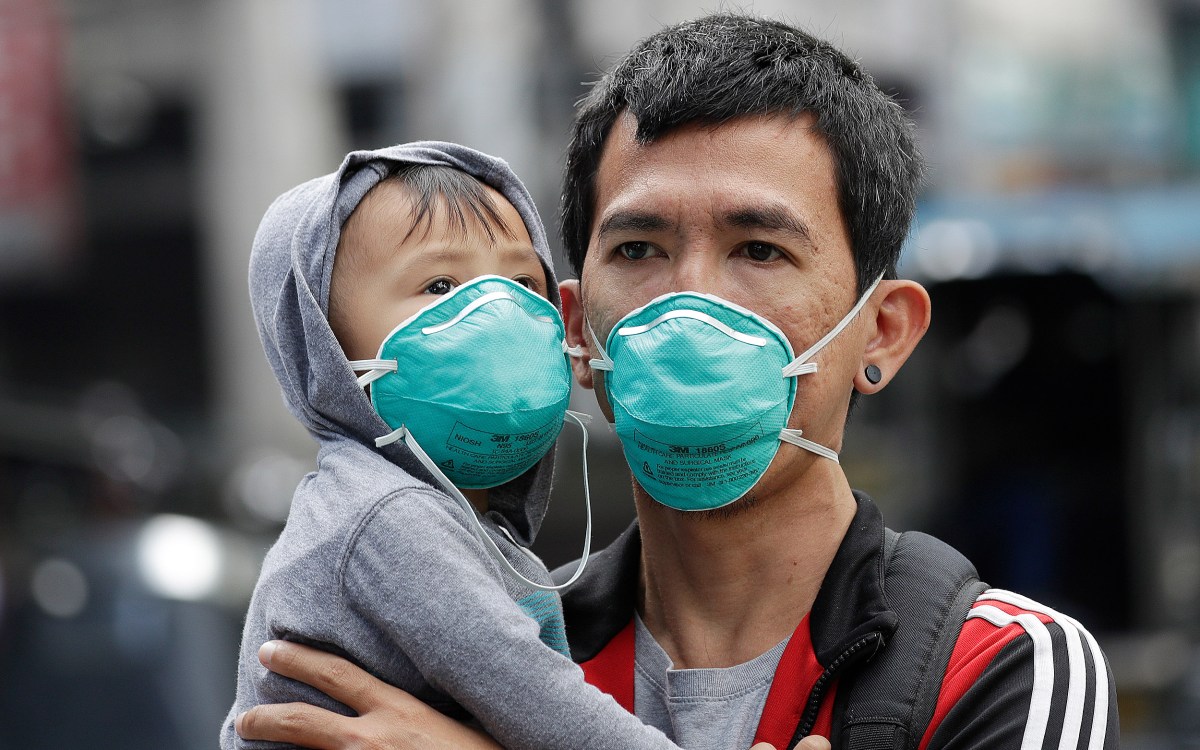
iStock
Setting school priorities: Care for children, families first
Yes, educators say, pandemic has underscored inequities, but amid the crisis there is a hierarchy of need
This is part of our Coronavirus Update series in which Harvard specialists in epidemiology, infectious disease, economics, politics, and other disciplines offer insights into what the latest developments in the COVID-19 outbreak may bring.
As schools scramble to teach students online amid the pandemic, educators at a recent webinar hosted by the Harvard Graduate School of Education (HGSE) highlighted the importance of reaching out to students and families to break the isolation and help them regain a sense of community.
“What matters most to young people is the idea of connection; seeing that they’re worth the effort to be reached in different ways,” said Sonja Santelises, Ed.M. ’99, Ed.D. ’04, CEO of Baltimore City Public Schools.
Developing community is critical right now, and teachers, guidance counselors, and social workers should focus on connecting with students and their families through any available means, including social media, texts, or phone calls, said Santelises, who offered her observations last Wednesday during “Leadership Through Crisis,” the second installment of Education Now, an HGSE initiative that aims to help educators through the crisis.
“As we approach other challenges, like what to do with graduation and other milestones, our young people are providing suggestions on how we can navigate this new world establishing connections when we can’t actually be physically together,” she said.
Santelises took part in a conversation with Anu Ebbe, principal of Shorewood Hills Elementary School in Madison, Wis., conducted by Richard Weissbourd, director of the Making Caring Common Project and co-director of the Human Development and Psychology program at the Ed School. The event drew more than 2,000 participants from 97 countries.
Educators must also find creative ways to overcome the inequities exposed by school closures, such as the problem of connecting with students who might not have computers at home or who lack internet access.
A high school teacher in Baltimore connected with her students on Instagram via cellphone, said Santelises. In Madison, Ebbe said her school is reaching families through texts and different social media channels. “Even with free Wi-Fi offers, we don’t always reach the communities that really need them,” she said.
“To ask families who are struggling for food on a day-to-day basis to support their children in an online platform is a very hard thing to ask.”
Anu Ebbe
In addition, school leaders should embrace flexibility and support families who might be struggling with food insecurity and job losses rather than blindly pushing them to help their children learn online. Ebbe’s approach focuses on keeping priorities clear: Support students and families during this crisis, and worry about the learning gap later.
“To ask families who are struggling for food on a day-to-day basis to support their children in an online platform is a very hard thing to ask,” said Ebbe. “We’ve been very flexible. We told our parents, ‘Do what you can.’”
Principals and other leaders find themselves in uncharted waters, with staffs learning how to instruct online as they’re doing it. Santelises said schools are living an “Apollo 13 moment,” in which teachers have to improvise how to help students learn with often severely limited resources.
“We have not dealt with this before,” said Santelises. “The piece that is challenging is doing it in real time with real lives with heightened levels of urgency. It’s not like we’re doing a simulation
in a seminar for one hour and then we go back to life as we know it. I feel we’ve been living an ongoing simulation for the last seven weeks.”
As they wrestle with the technical and logistical challenges of virtual learning, educators should lead with students and families in mind, showing care and compassion, offering mental health resources to those who need them, and finding the silver linings in this crisis.
“Because this crisis has highlighted inequities, I’m hoping that we, as a community, will start to become aware of them and tear down those inequities,” said Ebbe.
Santelises agreed, but she also underscored the importance of connection and communication among schools and students and families.
“This is not the time to try to reform the entire educational system in whatever country you’re in,” said Santelises. “This is the time to focus on meeting the needs of families and students in new ways.”
Education Now’s next episode, “The State of College Admissions,” will feature Lee Coffin, vice provost for enrollment and dean of admissions and financial aid at Dartmouth College, and Rachelle Hernandez, senior vice provost for enrollment management and student success at University of Texas, Austin. Register here.






